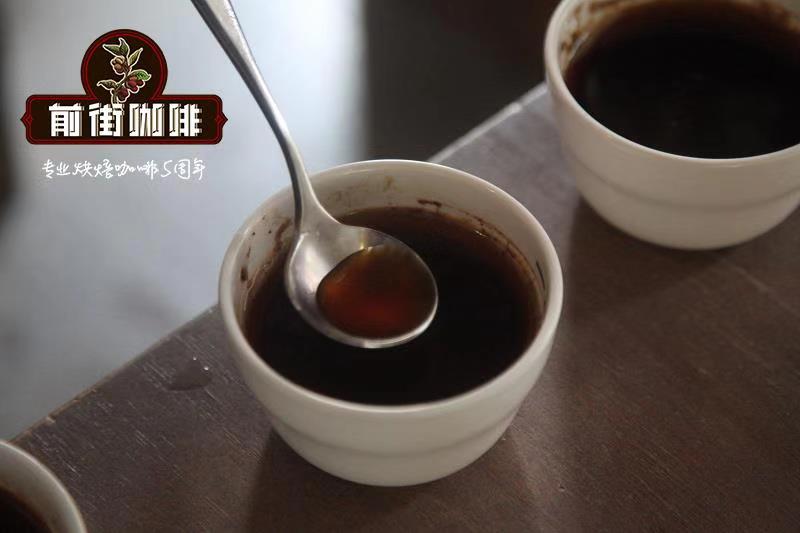Guatemala coffee is sour, Guatemala sun-cured coffee beans are brewed and shared.

Professional coffee knowledge exchange More coffee bean information Please pay attention to coffee workshop (Weixin Official Accounts cafe_style)
Front Street Guatemala·Pacamara Coffee Hand Brewed Flavor Introduction
Guatemala coffee beans, produced in Guatemala, this bean belongs to bourbon coffee beans, is one of the stronger varieties of sour taste alcohol and slightly wild, most suitable for blending into coffee.
Guatemala very hard beans to elegant lively acid, clean without impurity taste, distinct layers, as well as green apple sour fragrance, berry fruit fragrance, jasmine flower fragrance, orange peel fragrance, green pepper fragrance, fruit sour feeling, chocolate sweet fragrance, even the tail rhyme has smoke flavor known.
Such rich regional flavor should be related to the water and soil of the country's eight major producing areas. Among them, Antigua, Aikatango Valley, Etilan, San Marco and Huaiqiangsi five producing areas belong to volcanic geology. In addition, Vivienne Nango, Cobain and New Oriental three production areas, belong to non-volcanic highlands or tropical rain forest climate. Guatemala has more than 300 microclimates throughout its territory, the most in the world.
Guatemala El Morito
Guatemala Blueberry Estate
Country: Guatemala
Production area: New Oriental
Altitude: 1550-1800M
Treatment method: sun treatment
Grade: SHB
Breed: Pakamala
Recommended cooking method: hand brewing
Filter cup: Hario V60
Water temperature: 90℃
Powder water ratio: 1:15
Grindability: BG 6S (58% pass rate of Chinese standard No.20 sieve)
Cooking method: 29 grams of water steams for 32 seconds, water injection to 120 grams, and so on when the water level drops is about to expose the powder bed continue to water injection to 226 grams cut off water, water level drops is about to expose the powder bed remove the filter cup,(steams start timing) extraction time is 1 minute 56 seconds.
Flavor: Nutty smell, hot with plum, passion fruit acid notes, with some light fermented fruit flavor, the middle with cream sweet and nutty flavor, the end has green tea feeling, sugar back sweet lasting, temperature down with citrus acid notes, sour and sour shock, the finish is rose tea fragrance and slightly brown sugar sweet.
END
Important Notice :
前街咖啡 FrontStreet Coffee has moved to new addredd:
FrontStreet Coffee Address: 315,Donghua East Road,GuangZhou
Tel:020 38364473
- Prev

Panama hand brewed coffee over acid is what causes hand brewed coffee how to control acidity
Professional coffee knowledge exchange More coffee bean information Please pay attention to coffee workshop (Weixin Official Accounts cafe_style) Front Street Panama Flower Butterfly Hand Chong Introduction Panama is located in a typical coffee belt. Panama's neighboring countries are all famous coffee producing areas in the world. Together with these countries, they tell the world about the origin of coffee. The microclimate there is particularly suitable for coffee growing, high seas
- Next

What does espresso mean? how do you drink espresso or regular espresso?
Professional coffee knowledge exchange more information about coffee beans Please follow the coffee workshop (Wechat official account cafe_style) espresso the name comes from Italian. The word first appeared around 1900 and is roughly translated as coffee specially made for you. Today, you will often find that people pronounce or spell expresso incorrectly. Espresso makes people
Related
- Beginners will see the "Coffee pull flower" guide!
- What is the difference between ice blog purified milk and ordinary milk coffee?
- Why is the Philippines the largest producer of crops in Liberia?
- For coffee extraction, should the fine powder be retained?
- How does extracted espresso fill pressed powder? How much strength does it take to press the powder?
- How to make jasmine cold extract coffee? Is the jasmine + latte good?
- Will this little toy really make the coffee taste better? How does Lily Drip affect coffee extraction?
- Will the action of slapping the filter cup also affect coffee extraction?
- What's the difference between powder-to-water ratio and powder-to-liquid ratio?
- What is the Ethiopian local species? What does it have to do with Heirloom native species?

